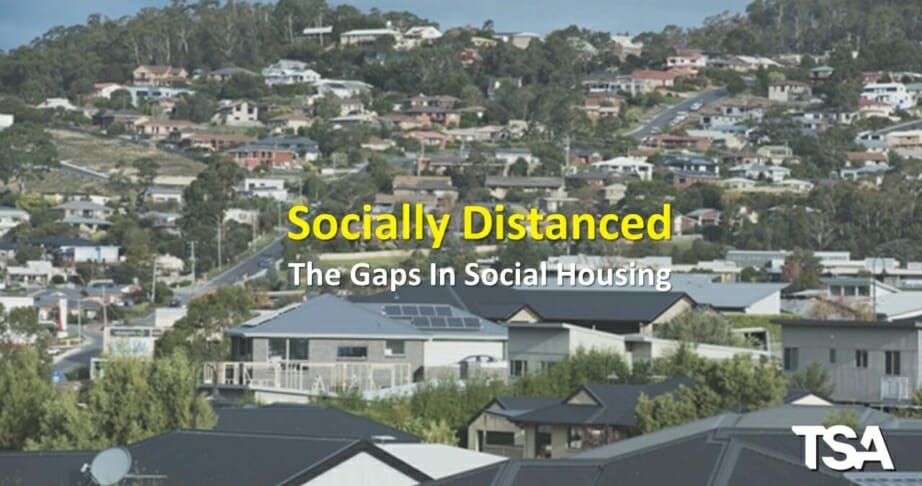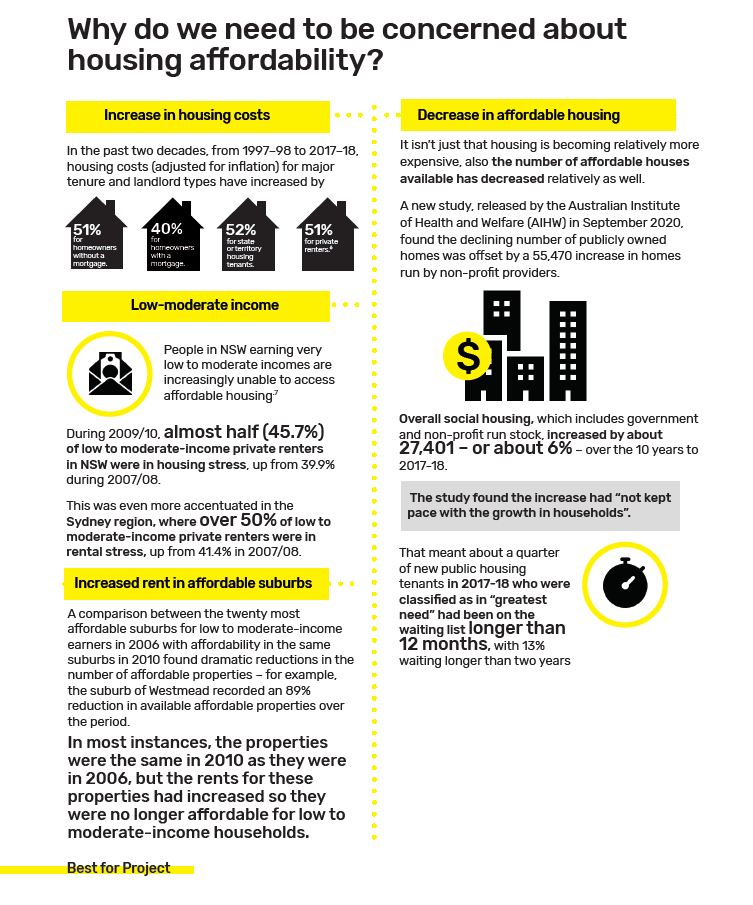
2 December 2020
Socially Distanced – The Gaps in Social Housing
The availability and affordability of housing for those on very low to medium incomes is a ‘wicked problem’.
Housing is not just a basic human need as declared by the United Nations. According to a recent paper for the NSW Community Housing Industry Council (NSW CHIC) housing is “an important instrument in the fight against poverty”. And in NSW, the Government’s Future Directions for Social Housing in NSW, considers that “social housing supports the most vulnerable people in the community who need a safety net”.
Despite all the research, evidence and goodwill, the problems of the shortages in affordable housing continue to grow. Post COVID-19, it is expected this will even be more exacerbated.
The purpose of this paper is to highlight the challenges and opportunities of the post COVID-19 era for social and affordable housing and how those people with an interest in, and responsible for the planning, funding and delivery of affordable housing can collaborate to address the challenges and harness the opportunities that will be presented.
Download the paper here.

The Challenge
A multiplicity of indices demonstrates the challenges facing the provision of affordable housing as evidenced by the attached paper. The Productivity Commission Report of 2019 and the Auditor General’s Report of 2013 painted a grim picture of the future especially of social housing NSW. That picture grows grimmer every year as highlighted in Government reports and redevelopment programs.
According to the NSW CHIC report, NSW has a current shortage of 216,500 affordable and social housing dwellings which is expected to grow by an additional 100,200 by 2036 and require a funding of $3.5b.
The NSW State Governments Future Directions for Social Housing Policy tasked the NSW Land and Housing Corporation (LAHC) in 2016 to deliver 23,000 new social housing by 2026. According to available data it is going to be a challenge to meet this target and the current waiting list of over 51,000 is inevitably going to continue to grow.
The current funding model for social housing is unsustainable as was revealed by the Productivity Commission and the Auditor Generals Reports. The NSW CHIC report identifies the difficulties of attracting new equity capital into affordable housing and notes that despite the huge investment by State and Federal Governments of $7b per annum on housing generally in NSW, social and affordable housing have a paltry share of the funds.
The problems are more than just funding. They are also about the role of the various levels of Government and community attitudes that stymie the provision of social and affordable housing. The NSW CHIC report highlights that there is a shared policy failure at the 3 levels of Government that is widening the housing gap. Furthermore, unresponsive planning controls and community antipathy towards social housing, contribute towards making affordable housing a challenge for those involved.
Post COVID-19
To paraphrase a former Prime Minister, there may be no better time to be involved in the debate and delivery of affordable housing.
Recent evidence and reporting suggest that there is widespread support for greater investment by all levels of Government in social and affordable housing. The Business Council of Australia (BCA), the Superannuation Industry, the construction sector, the federal opposition, the RBA and the NSW State Government, to name a few, have all singularly and collectively called for greater investment in affordable housing as a key stimulus to the economy during and post COVID-19. NSW CHIC in particular considers that the pandemic provides an urgent and generational justification to address 30 years of affordable housing decline.
Evidence suggests that in crises, investment in social and affordable housing is not only a key economic stimulus but Governments can also harness the necessary resources. This was demonstrated in the public housing programs after World War 2 and more recently during the Global Financial Crisis of 2009.
Post COVID-19 presents a similar opportunity. A new era that will require new policy, planning, funding, collaboration and political will. It will also require thinking about new models which unlock the bottle necks each of these spheres present.
Where to From Here
There is no silver bullet to addressing the affordable housing problem. No single entity or level of Government has all the answers and there is a variety of delivery and funding models currently being explored.
Addressing affordable housing going forward requires all communities of interest to get together and share their knowledge and experiences. Every initiative requires leadership whether in terms of ideas or fostering collaboration.


